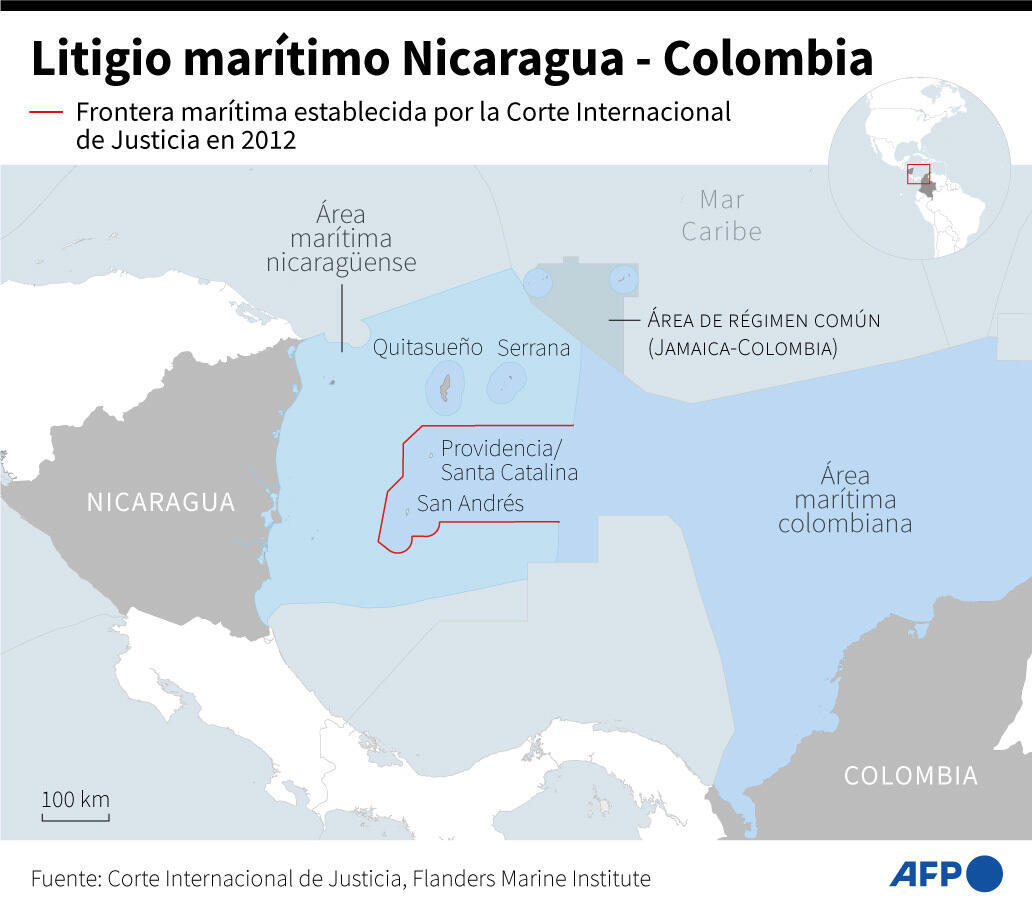The International Court of Justice (ICJ) rejected on July 13 Nicaragua’s claims against Colombia to expand its continental shelf in the Caribbean, an area rich in fishing and oil resources.
First modification: Last modification:
2 min
The judges of the highest court of the UN, based in The Hague, rejected by thirteen votes to four Nicaragua’s arguments against a 2012 ruling that granted it a large extension of its maritime zones in the Caribbean, but without going further of the 200 nautical miles that would make it overlap the exclusive economic zone of seven Colombian islands.
Colombian President Gustavo Petro celebrated a “great victory for Colombia in The Hague.”
“The ICJ did not agree to Nicaragua’s claims to expand its continental shelf. We hope with this ruling to close the border dispute and focus on bringing sustainable development to our archipelago,” said Petro from the Colombian archipelago of San Andrés, Providencia and Santa Catalina, located in the Caribbean area in dispute.
Nicaragua claimed to delimit its continental shelf in the Caribbean, alleging rights to the seabed and subsoil beyond the 200 nautical miles established by international law.
However, this extension would imply an overlap with the Colombian continental shelf in the San Andrés archipelago.
Natural resources and fishing
Nicaragua defended that both customary law and article 76 of the UN Convention on the Law of the Sea offer legal coverage to its claim.
But Colombia, which has not ratified the Convention, argued that Managua “did not scientifically demonstrate that it has a continental shelf” that extends beyond 200 miles.
“In this dispute, maritime areas rich in biodiversity, fishing resources, scenic beauty, but also natural resources are at stake” such as gas and oil, Nicolas Boeglin, professor of Public International Law at the University of Costa Rica, told AFP.
The dispute over this precious space dates back to 1928, when both countries signed a treaty that recognized Colombia’s sovereignty over the San Andrés archipelago.
Managua, which is unaware of the validity of the agreement, filed a first lawsuit before the ICJ in 2001, resolved in 2012 when the court granted it an area of approximately 75,000 km2 in the Caribbean Sea, but ratified Colombia’s sovereignty over the archipelago.
In this way, the ruling left those Colombian islands surrounded by Nicaraguan territorial waters, a situation that led to another dispute over the presence of Colombian ships in the area.
As a result of the 2012 ruling, the Colombian government withdrew from the Pact of Bogotá, an instrument that precisely recognizes the jurisdiction of the ICJ for this type of dispute.
In 2013, Nicaragua filed another lawsuit before the ICJ to demand that Colombia refrain from violating maritime spaces.
Colombia in turn countersued Managua for affecting the lives of the Raizal population that lives from artisanal fishing in these territories.


![[Img #74683]](https://thelatestnews.world/wp-content/uploads/2024/12/The-main-mistakes-to-avoid-when-betting-on-electronic-sports-150x150.jpg)












